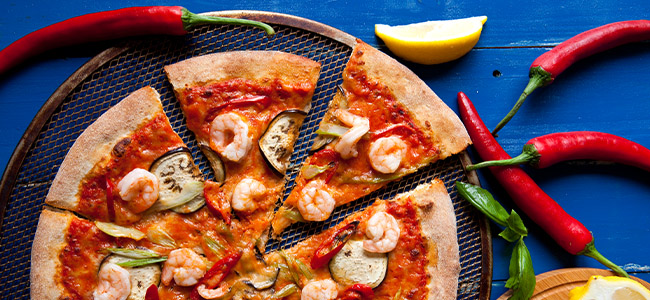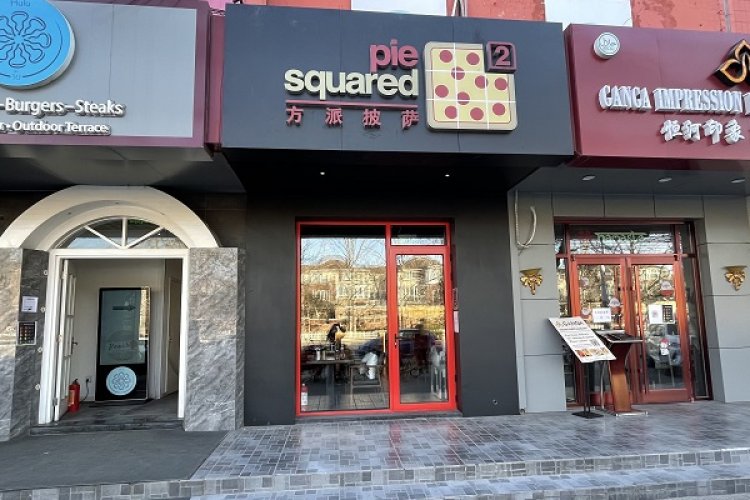Behind the Scenes with Gung Ho's New Revamped Menu
To get you in the mood for the ongoing voting in the 2014 Pizza Cup (see our round-up of Round 2 pizza meal deals here) we've sent our minions out to patrol the streets for pizza. Here's a selection of what they've found:
Homesick foreigners may be willing to fork over plenty of dough at Beijing’s pizzerias, but John O’Loghlen says his industry’s upper crust is comprised of Chinese customers.
In fact, he and his co-owners at Gung Ho! Pizza have taken numerous steps to tap into that demographic, and those efforts are reflected in the restaurant’s recent menu additions, which include new pizza combos featuring toppings like barbecued chicken with spinach and eggplant.
“These are classic Chinese flavours which we've been trying to give a gourmet twist to," O’Loghlen says. "We want to unlock Chinese flavours in pizzas,”
However, Gung Ho will never toss the classics in favor of a menu of all Sino-themed ingredients. Says O’Loghlen: “You’re always going to need a meat lovers pizza for guys, Hawaiian pizza for kids, and pepperoni will probably always be our top seller.”
RELATED: Pig Ear, Hot Pot and Durian: Zany Pizza Combos at Dongzhimen's WhaleWell
However, to win the hearts of Chinese clientele, O’Loghlen says you've got to go well beyond pizzas.
“Chinese people want a lot of stuff around the table with their pizza: salads, starters, appetisers,” O’Loghlen says, adding that demand for more eclectic menus has become very mainstream in the Middle Kingdom. “Even if you go to Pizza Hut here, you’ve surely noticed that there’s tons of other items on there. Pizza only makes up about 27% of their revenue. For us, it’s higher than that, but the sides are still a major portion of every order.”
That wasn’t always the case. In fact, right up until this fall, Gung Ho!’s Sanlitun location was known as a no-muss, no-fuss, sparsely decorated eatery with a few benches. At the time, the staff spent the vast majority of its efforts on deliveries, with only a tiny minority of Gung Ho!’s clientele actually leaving home and coming on site for a slice.
This fall that all changed as the restaurant added more tables, a warmer decor, a fully stocked bar and a revamped menu. Among those new dishes are a vast array of salads, cocktails, and appetisers like beer battered fish.
For O’Loghlen, it was high time to make that change. He and his co-owners had mulled over the idea of shifting their mostly take-out business to a full-on dine-in restaurant ever since 2008. The fact that they have finally done so marks another step in the direction he has wanted to take since he began working for the Domino's pizza chain’s Asian division.
“I was working at Goldman Sachs in New York, making a lot of deals in Asia, and I saw the writing on the wall: that the economic power of the world was shifting,” O’Loghlen says. After an intro to the people at Domino’s, he came here to run their Asian division for three years.
But over that period, O’Loghlen says that his tastes, along with those of his clientele, changed: “Everyone’s sick and tired of fast food and just bad pizza. But that was the dominant product here then, that’s what everyone knew.”
As he saw the burgeoning gourmet trend in Beijing’s F&B scene, he began to think that such an approach could be brought to pizzerias. He and Gung Ho’s founders met with pizzeria owners in Naples, the US and his native New Zealand, learning the tricks of their artisan trade and bringing those skills to bear in Beijing.
And now he sees a new turning point in his industry. “Pizza is almost the entry product now. That still what we’re known for, it’s still our speciality, but the sides are where the growth is,” he says, adding that he aimed to bring his own twist to this trend: “I wanted to provide Australian and New Zealand comfort food that I grew up with, stuff that’s healthier and fresh.”
He has also turned to his homeland’s finest cheese for Gung Ho!’s pizzas. “I think New Zealand mozzarella is the best in the world,” he says, adding that the remaining key ingredients are sourced from other locales: “ In our second year of operation, we acquired a classic dough recipe from a Venetian flour company we were working with at the time. And we import canned tomatoes from Italy or Spain, because the local Chinese canned tomatoes don’t give us the flavour we need.”
It all adds up to a damn good international pie. “We’ve had that classic foundation— cheese, dough, sauce— for awhile, so now we want to bring unique new twists on top of it, like roasted vegetables, which our Chinese customers really like.”








